Jennifer L. Holm returns to Key West during the Depression - the Great One, not the recent turn of the 21st century bank blow-up - just clarifying - in Full of Beans.
Grown-ups lie. There you have it. It's a fact and Beans can give you example after example of how this works. But as Beans tries to survive a sweltering summer in down and out Key West, he discovers that kids can be deceitful, too. Even stand-up kids like himself.
Holm did her homework in verifying the New Deal program that turned a worn-out Florida village into a tourist attraction. Beans calls the government agent a Crazy Man, and lampoons his "underwear" - bermuda shorts - in between marble tournaments and running errands for a shady businessman. Everyone in town thinks the house paint they are given is ridiculous.
When Bean's plans put his friends in danger, he has to make amends. He rallies his band of kids to help save Key West. In an unrelated subplot, Holm reintroduces the miracle diaper rash remedy - somewhat modified - that she mentioned in Turtle in Paradise.
Oh and there's an adorable dog. Can't lose with a dog in the book.
Viewing: Blog Posts Tagged with: crillustration artist, Most Recent at Top [Help]
Results 1 - 17 of 17
Blog: Books 'n' stories (Login to Add to MyJacketFlap)
JacketFlap tags: book reviews, Jennifer L. Holm, Great Depression, Key West, Full of Beans, Add a tag
Blog: OUPblog (Login to Add to MyJacketFlap)
JacketFlap tags: Books, agriculture, great depression, stock market, financial crisis, Social Sciences, *Featured, Business & Economics, Federal Reserve, U.S. Congress, Richard S. Grossman, Economic Policy with Richard S. Grossman, Wrong nine economic policy disasters, stock exchange, interest rates, US financial crisis, wrong: nine economic policy disasters and what we can learn from them, Add a tag
t the conclusion of the mid-September meeting of the Federal Open Market Committee (FOMC), the Federal Reserve announced its decision to leave its target interest rate unchanged through the end of this month. Although some pundits had predicted that the Fed might use the occasion of August’s decline in the unemployment rate (to 5.1 percent from 5.3 percent in July), to begin its long-awaited monetary policy tightening, those forecasts left out one crucial fact.
The post Don’t panic: it’s October appeared first on OUPblog.
Blog: The Children's Book Review (Login to Add to MyJacketFlap)
JacketFlap tags: Family, Ages 9-12, Historical Fiction, Chapter Books, Depression, Great Depression, Books for Girls, Middle Grade Books, Laura Golden, Add a tag
This book will appeal to middle grade readers who like spunky protagonists, are dealing with difficult family situations, and who like learning about earlier eras in America, (in this case the depression in the 1930s).
Add a CommentBlog: The Children's Book Review (Login to Add to MyJacketFlap)
JacketFlap tags: Ages 9-12, Diversity, Historical Fiction, Black History Month, Civil Rights, African American Authors, African American, featured, Books for Boys, Atheneum Books for Young Readers, Great Depression, Books for Girls, Adversity, Simon & Schuster Books for Young Readers, Segregation, Family Relationships, Sharon M. Draper, African American History Month, Ku Klux Klan, Cultural Wisdom, Books Set in the 1930s, Community Relationships, Add a tag
Stella by Starlight, by esteemed storyteller Sharon M. Draper, is a poignant novel that beautifully captures the depth and complexities within individuals, a community, and society in 1932, an era when segregation and poverty is at the forefront.
Add a CommentBlog: OUPblog (Login to Add to MyJacketFlap)
JacketFlap tags: Books, History, Biography, president, America, roosevelt, great depression, fdr, Franklin Delano Roosevelt, Theodore Roosevelt, slideshow, Eleanor Roosevelt, New Deal, *Featured, Images & Slideshows, Add a tag
The Roosevelts: Two exceptionally influential Presidents of the United States, 5th cousins from two different political parties, and key players in the United States’ involvement in both World Wars. Theodore Roosevelt negotiated an end to the Russo-Japanese War and won the 1906 Nobel Peace Prize. He also campaigned for America’s immersion in the First World War. Almost 25 years later, Franklin Delano Roosevelt came into office during the calamitous aftermath of the Great Depression, yet during his 12-year presidency he contributed to the drop in unemployment rates from 24% when he first took office, to a staggering mere 2% when he left office in 1945. Furthermore, the first lady Eleanor Roosevelt encouraged discussion and implementation of women’s rights, World War II refugees, and civil rights of Asian and African Americans even well-after her husband’s presidency and death. Witness the lives of these illustrious figures through this slideshow, and take a look at the first half of 20th century American history through the lives of the Roosevelts.
Headline image credit: The Roosevelt Family. Library of Congress.
The post A visual history of the Roosevelts appeared first on OUPblog.
Blog: Kid Lit Reviews (Login to Add to MyJacketFlap)
JacketFlap tags: Historical Fiction, Middle Grade, Great Depression, Boy Scouts, hard work, 5stars, Library Donated Books, calling in loans, Character Publishing, Chelsea Sekanic, earning respect, Elizabeth Renee Heiss, mutual help, stock market crash of 1930, true friendships, Add a tag
. Woody’s World by E. Renee Heiss illustrated by Chelsea Sekanic Character Publishing 5 Stars Back Cover: In 1929, twelve year-old Woody thinks little about money. Then the stock market crashes, crumbling his father’s business with it. Suddenly, money becomes very important to Woody, so he searches for ways to help his family. Sometimes his …![]()
Blog: Stacy A. Nyikos (Login to Add to MyJacketFlap)
JacketFlap tags: Not Buddy, The Mighty Miss Malone, Fiscal Cliff Diving, Great Depression, poverty, Christopher Paul Curtis, Bud, Add a tag
The Mighty Miss Malone
Christopher Paul Curtis
Middle grade
After all the fiscal cliff diving the United States media has practiced in the last forty-eight or so hours, this book seems incredibly fitting to review. Christopher Paul Curtis revisits the height of the Great Depression in Indiana/Michigan - site of his Newbery-winning Bud, Not Buddy - in The Mighty Miss Malone.
The story follows the lives of twelve year-old Deza Malone, her brother Jimmie and parents Peg and Roscoe as their lives spiral downwards into shanty town destitution after Deza's father leaves town to find work, her mother loses her job, and the family, their house.
What happens to a family torn apart by poverty? The Mighty Miss Malone draws a very stark picture. It's not so stark that a young audience will feel overwhelmed, but it is very eye-opening. I watched the effects on my daughters every morning on the way to school (we listened to this book on tape). The enlightenment that life can be very very different, was and, today, is for over fifteen million children nationwide reflected on their faces many mornings.
Curtis provides both a forward and an afterward, first grounding the story in the roots of unshakable family bonds and then providing hard-hitting facts such as the number of children living below the poverty line in the U.S. today. He does a good job of weaving a story that entertains, awakens curiosity and provides information.
From a craft perspective, The Mighty Miss Malone, while solidly built upon characters so real I feel as if I've met them before in my life, follows a plot that is less satisfactory and somewhat random. This could be meant to reflect the very real randomness which wreaks havoc on the lives of so many living at the edge of or in poverty. However, this randomness makes the ultimate resolution to the family's financial woes almost like a deux ex machina. Again, in many ways, finding work during the Great Depression may very well have felt like a deus ex machina. I remember my dad telling me stories about his grandmother, mother of ten children during the Depression, walking down the street and finding a dime and breaking down into tears because she didn't have any money to buy food until she found that dime. So take my comments with that grain of reality salt.
Add to that, however, that Deza does very little to change her plight, unlike Bud, in Bud, Not Buddy, who himself strikes out to find his lone surviving relative. Nor does she solve the internal, emotional struggle, i.e. reuniting the family. Does it matter? Because both the external and internal problems are solved by someone other than the main character, those resolutions are not as intense, nor do they feel as earned. Deza, like the main reader, is along for the ride. We feel with her. We feel acutely. Curtis does an excellent job with that, but we don't ultimately feel satisfied with the story's resolution because Deza hasn't done much to make to it happen. She's suffered, but her suffering doesn't buy her the golden elixir. It's suffering that could continue on indefinitely if someone else (both her mom and her brother) hadn't bought the golden elixir with their actions. Ultimately, it's a bifurcated hero's journey with many hero's solving problems, but none of them is the main protagonist.
Don't let that stop you from reading The Mighty Miss Malone. It's a story worth reading, a time in our history worth revisiting. Maybe if a few members of Congress were to do so, fiscal cliff diving might take on an entirely different meaning.
Oops. Mixing politics with book reviews. Bad, bad reviewer!
For other warm winter reads, plow on over to Barrie Summy's website. Happy 2013!
Add a Comment
Blog: Book Love (Login to Add to MyJacketFlap)
JacketFlap tags: family, historical fiction, world war II, great depression, PoC, fearless female, Add a tag
The Mighty Miss Malone by Christopher Paul Curtis, Wendy Lamb Books, 2012, 320 pp, ISBN: 0385734913
It's going to be darn near impossible for me to recap this gem without going into a three page summary. So, here are the highlights.
- Deza Malone: quite possibly one of the best tween characters ever written. For real.
- The Malone Family: "We are a family on a journey to a place called wonderful." And they are.
- The Great Depression: No one is escaping this monster, and the Malones are hit harder than most.
- Joe Louis vs. Max Schmeling: The fight the whole world watched, and a catalyst in Deza's own story.
Review:
If I had to describe this book in just one word, it would be Delightful. For about the first 89 pages I simply could not wipe the smile off my face. That Deza Malone is just a hoot and a half! After page 89, well... her story got a whole lot more depressing. But even when she could have been wallowing in the depths of despair (I think Roscoe Malone's penchant for alliteration is rubbing off on me), Deza was never anything short of delightful.
I haven't read dialogue this good since the amaaaaaazing Absolutely True Diary of a Part Time Indian. I have a bad habit of turning down pages when I want to remember a line, or two, or five, and I think I turned down about every other page. Whoops. Read the Quotable Quotes below to get just the tiniest idea of what I'm talking about.
Set in the midwest during the Great Depression, Christopher Paul Curtis takes his readers on a tour of the streets of Gary, IN - where work is all but impossible to find, then on to the homeless camp near the tracks outside of Flint, MI, and then finally to the glamorous speakeasies of Chicago. He also uses each distinct setting to illustrate the fact that even though these cities may be "geologically located" pretty near to each other, people's attitudes about race varied widely from place to place, dramatically impacting the Malones' opportunities at each stop.
Curtis also made a point of including the 1936 fight between Joe Louis and Max Schmeling. Initially, Deza couldn't imagine why everyo
Blog: Maud Newton (Login to Add to MyJacketFlap)
JacketFlap tags: Neuroses, nytmag, sandstorm, Culture, texas, great depression, Reviewed/Discussed Elsewhere, the grapes of wrath, dust bowl, woody guthrie, steinbeck, Published Elsewhere, drought, Add a tag
Similarities between our time and the Great Depression era are extending beyond the fiscal crisis.
My latest New York Times Magazine mini-column looks at a sandstorm, “Steinbeck-ish in its arrival,” that rolled through Lubbock, Texas last month, as a harbinger of a possible impending (and permanent) Southwestern Dust-Bowlification. “I expected at any moment to see a line of Model Ts coming through headed to California,” a city councilman said. “It really did look like pictures I had seen of the Dust Bowl of the 1930s.”
See (and hear) also a tour of Grapes of Wrath country as of 2009 and Woody Guthrie’s “Talking Dust Bowl Blues” (above).
Add a CommentBlog: Book Moot (Login to Add to MyJacketFlap)
JacketFlap tags: historical fiction, florida, great depression, Add a tag

Jennifer Holm spins the reader back to the perilous economic times of the Great Depression. Set in the 1930s, eleven year old Turtle is sent to live with her Aunt Minerva in Key West, Florida because her single mother has a new job as a housekeeper and the new employer does not want children staying at the house. Turtle settles into life in Key West, eating new foods and trying to fit in with her male cousins.
The Our Gang comedies come to mind as her cousin Bean and the neighborhood Diaper Gang work to provide babysitting and diaper changing services for the mothers in the area. The children pull the neighborhood babies in their wagon and provide a secret cure for diaper rash that is a the stuff of legend. Unlike today, these children enjoy a wonderful freedom, safe within their community and extended families. Turtle meets more of her mother's family for the first time, including her ill tempered grandmother, Nana Philly. Her grandmother is suffering from the after-effects of a stroke and a lifetime of ill humor. Happily, Turtle is not fazed by her grandmother's attitude. Holmes always writes such interesting grandmother characters into her stories. Turtle gains more insight into her mother's early life and the man who might be her father. There is also lost pirate treasure, a hurricane and a cameo appearance from a very famous literary resident of Key West.
Photos of Key West and some of the real life characters in the story are provided at the end. Holm's research and meticulous attention to detail pay off, giving the story a rich sense of place and time.
Jennifer Holm's characters, May Amelia (Our Only May Amelia,) Penny (Penny from Heaven
,) and now Turtle are girls I love spending time with.
Blog: The Children's Book Review (Login to Add to MyJacketFlap)
JacketFlap tags: Kimberly Newton Fusco, General, Jennifer L. Holm, Amelia Earhart, Jane Austen, Great Depression, Sarah McMenemy, Sue Stauffacher, Candace Fleming, Jennifer Donnelly, Women's History, Cora Harrison, Jame Richards, Add a tag
By Bianca Schulze, The Children’s Book Review
Published: March 23, 2011
This is an abbreviated version of a list of books put together by Lauren Donovan from Random House Children’s Books.
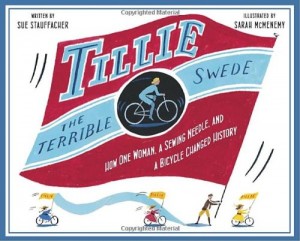 TILLIE THE TERRIBLE SWEDE: How One Woman, a Sewing Needle, and a Bicycle Changed History
TILLIE THE TERRIBLE SWEDE: How One Woman, a Sewing Needle, and a Bicycle Changed History
By Sue Stauffacher; illustrated by Sarah McMenemy
When Tillie Anderson came to America, all she had was a needle. So she got herself a job in a tailor shop and waited for a dream to find her. One day, a man sped by on a bicycle. She was told “bicycles aren’t for ladies,” but from then on, Tillie dreamed of riding—not graceful figure eights, but speedy, scorching, racy riding! And she knew that couldn’t be done in a fancy lady’s dress. . . . With arduous training and her (shocking!) new clothes, Tillie became the women’s bicycle-riding champion of the world. Sue Stauffacher’s lively text and Sarah McMenemy’s charming illustrations capture the energy of America’s bicycle craze and tell the story of one woman who wouldn’t let society’s expectations stop her from achieving her dream.
Alfred A. Knopf | January 25, 2011 | Ages 5-8 | 40 pgs
Add this book to your collection: TILLIE THE TERRIBLE SWEDE: How One Woman, a Sewing Needle, and a Bicycle Changed History
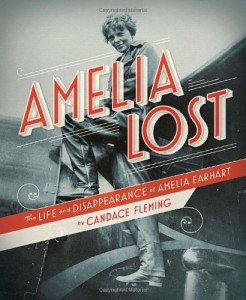 AMELIA LOST: The Life and Disappearance of Amelia Earhart
AMELIA LOST: The Life and Disappearance of Amelia Earhart
By Candace Fleming
In this stunning new biography, Candace Fleming, the acclaimed author of The Great and Only Barnum and The Lincolns: A Scrapbook Look and Abraham and Mary, peels back the layers of myth surrounding the world’s most famous aviatrix Amelia Earhart and presents an honest portrait of a multi-faceted, inspirational woman. With photos, maps, and hand-written notes from Amelia herself—plus informative sidebars tackling everything from the history of flight to what Amelia liked to eat while flying (tomato soup), this unique biography is tailor-made for middle graders.
Schwartz & Wade Books|February 8, 2011| Ages 8-12 up|128 pgs
Add this book to your collection: AMELIA LOST: The Life and Disappearance of Amelia Earhart
By Kimberly Newton Fusco
Filled with memorable moments and a winning cast of characters, Fusco’s story, set during the Great Depression, is sure to tug at the heartstrings of all who read it. Bringing topics such as the Depression and segr
Add a CommentBlog: Kids Lit (Login to Add to MyJacketFlap)
JacketFlap tags: Elementary School, Florida, Great Depression, Book Reviews, historical fiction, Add a tag
Turtle in Paradise by Jennifer L. Holm
Because her mother gets a job with a woman who doesn’t want a child around, Turtle has to move across the country from Pennsylvania to Key West to live with her aunt and cousins. Set in 1935 during the Depression, the book captures the unique character of the Florida Keys as well as the poverty and joblessness of the time period. Turtle finds herself surrounded by boy cousins who have started their own business that pays in candy. They look after babies by pulling them around in a wagon for a few hours to give mothers a break. They also have a secret diaper rash formula that helps keep them in business. Their small town is filled with characters all with interesting nicknames. Turtle discovers a lot during her summer in the Keys: the ties of family, the power of hurricanes, and how to find buried treasure. This book is an ideal summer read.
Holm packs such a great story in this brief book thanks to her stellar writing. It features a heroine who is smart, sassy, and very brave. She has specific ideas about things and is never afraid to say them, even though they will have readers cringing at her bald honesty. Holm beautifully creates a town of characters who are constantly surprising, always more complex than expected, and delightfully depicted. Her writing is clean as an ocean breeze, moving along at a brisk pace. Dialogue is at the heart of the book and is written with a great ear and accuracy.
Highly recommended, this book based on Holm’s family history, offers a window into the Great Depression and into Key West with a Little Rascals feel. It would make an excellent read aloud but an even better beach read. Appropriate for ages 9-12.
Reviewed from copy received from Random House.
Also reviewed by:
Add a CommentBlog: Welcome to my Tweendom (Login to Add to MyJacketFlap)
JacketFlap tags: babies, Great Depression, extended family, double-crossing, Florida, pirates, Add a tag
 It's June 1935 and Turtle is headed down south to Key West. She's being driven by her mother's latest boyfriend's friend who owes him a favour. Her mother's latest housekeeping gig doesn't allow children, and since it's the heart of the Great Depression there is no choice in the matter, so Turtle is being sent off to live with the relatives that she's never met.
It's June 1935 and Turtle is headed down south to Key West. She's being driven by her mother's latest boyfriend's friend who owes him a favour. Her mother's latest housekeeping gig doesn't allow children, and since it's the heart of the Great Depression there is no choice in the matter, so Turtle is being sent off to live with the relatives that she's never met.
Turtle has heard her mother's stories about growing up in paradise, but it seems that she was a little shaky on the details. When they finally find Turtle's people, the house is so small "you could probably sneeze from one side to the other." (p. 15) There's a barefoot boy on the porch named Beans and when his Mama comes through the door, it's clear that Turtle's mama's letter letting folks know that she was coming never showed up. Turtle's aunt is all on her own with her husband being up in the Northern Keys finding work, and she's got her hands full with 3 kids and an angry aging mother to deal with. But family is family and soon Turtle is finding herself at home on an island where she seems to be related to just about everyone.
Soon Turtle, Beans, Kermit, Buddy and Pork Chop are busy getting into all sorts of adventures. Mean old grannies, pirate booty, rum-runners, and cranky babies are all in Turtle's future. Throw in a hurricane and an old fashioned adventure filled with unforgettable characters is born.
Jennifer Holm has written a character driven story that is ripe for reading aloud. Turtle is a spitfire, and her cousins aren't to be left out of the spotlight either. I would love to read some more adventures about these conch folks. Turtle is one of those characters that readers won't want to let go of, and they will find their hearts alternately soaring and breaking for her.
Simply wonderful.
Blog: Biblio File (Login to Add to MyJacketFlap)
JacketFlap tags: Fiction, Graphic Novel, historical fiction, Juvenile, Matt Phelan, Great Depression, Dust Bowl, Add a tag
The Storm in the Barn Matt Phelan
This largely wordless graphic novel shows Jack, a young boy growing up in Dust Bowl Kansas. He can't help on the farm that's not growing anything. His sister is very ill with dust pneumonia, and the town bullies keep beating him up. In this bleak landscape, he thinks he might be seeing something in the neighbor's abandoned barn...
I liked this and I didn't. It's a fantasy. There are huge not-true fantastical elements to this. And... as a story, it didn't really work for me. In general, I'm ok with attributing various historical events to supernatural reasons (Hello Jonathan Strange and Mr. Norrell! Or Soulless!) but it just didn't work here and I can't quite put my finger on why.
That said, it is beautiful book. The muted, hazy pictures of brown, brown, brown, some muddy blue really convey the bleakness of the landscape and all that dust dust dust. When someone's telling a story or a memory, something that doesn't take place in the dust, colors become bright and lines crisp. Then it's back to the hazy endless brown. I could look at this book for hours.
Also, I love the juxtaposition of Ozma of Oz, being stranded on the desert, being far from Kansas. Only Jack's Kansas is the Endless Desert. My only question is WHY is there no mention in the book about where these long quotations come from? It doesn't necessarily have to be in the story, but you'd think it would appear on the copyright page (such as "Quotations from Ozma of Oz (c) L. Frank Baum.") The closest we get is when the author's note says that the Wizard of Oz movie would come out two years after this book comes place.
Book Provided by... my local library
Links to Amazon are an affiliate link. You can help support Biblio File by purchasing any item (not just the one linked to!) through these links. Read my full disclosure statement.
Blog: Shari Lyle-Soffe (Login to Add to MyJacketFlap)
JacketFlap tags: children, craft, Great Depression, stone soup, missions, churches, split pea soup, soup kitchens, Add a tag
I love it! It is National Soup Month. Speaking for myself, I love soup, especially during cold weather. First of all soup is so versatile. I couldn't begin to guess how many different soups there are for our pleasure. Soup warms you from the inside out on a cold day.
I had a neighbor years ago who refused to feed her family soup, canned or homemade, she thought soup was worthless. Can you imagine?? I actually felt sorry for her family.
Soup can actually be a family project. Read "Stone Soup" to your children. It is a wonderful story about the value of sharing. After you have read the story take the kids to the local market and have each member pick out something to put in your own version of Stone Soup (Nix on the chocolate bars, marshmallows, etc. They may need a little bit of supervision but not too much.) When you get home have each member of the family prepare their ingredient to go into the pot. You may want to start with some prepared stock or broth. Choose some tasty toppers: shredded cheese, crumbled bacon, sliced scallions, a dollop of sour cream, use your imagination. Serve it with: crackers, hard rolls, bread sticks, tortillas or sandwiches if you wish.
If this doesn't appeal to you try this Stone Soup Recipe from the Food Network.
Have a soup party to celebrate National Soup Month! Invite your friends for a soup potluck. Have each guest or family bring a crockpot of their favorite soup. Ask them the bring a few copies of the recipe for those who might want to make it themselves. You can provide the toppers and go alongs. Provide bowls and mugs (plenty of spoons too) so everyone can try them all. Ask the guests to bring a can of food or non perishable food item to be donated to the local food pantry.
A soup party would be a good fund raising event for your church congregation to help the homeless or other helpful organizations. Maybe your church could start a food pantry. My church did this a few years ago, starting in a shed behind the church, and is now serving over 2,000 people from a building they purchased from donations.
Talk to your children about the Great Depression 5 Comments on NATIONAL SOUP MONTH!, last added: 1/21/2010
Blog: OUPblog (Login to Add to MyJacketFlap)
JacketFlap tags: History, Poetry, American History, A-Featured, great depression, Finance, david, moody, credit, cantos, ezra pound, financial crisis, Add a tag
by Cassie, Publicity Assistant
A. David Moody is Professor Emeritus of the University of York and the author of Ezra Pound, Poet: Volume 1: The Young Genius 1885-1920. In the following piece, Moody looks at the Pound’s opinions on democracy and the economy, showing us that Pound’s opinions in the 1930s line up fairly well with the pundits of today. This piece is also timely since October 30th is Pound’s birthday and he died on November 1, 1972.
I am finding it hard to pin down a feeling I have these days as I read the pundits on the current financial crisis and hear echoes all the time of what Ezra Pound was writing in the 1930s. But Pound was called a crank for his beliefs.
 “The provision of finance is a utility, just like the distribution of water and energy. Yet this public good is in the hands of private sector managers who have done a disastrous job.”
“The provision of finance is a utility, just like the distribution of water and energy. Yet this public good is in the hands of private sector managers who have done a disastrous job.”
(Guardian (London), editorial comment, 9 Oct. ‘08)
“The City has become a ghetto where greed (never mentioned) is all but an absolute good.”
(Andrew Phillips (Lord Phillips of Sudberry), City solicitor, Guardian 16 Oct. ‘08)
“Financiers have organized themselves so that actual or potential losses are picked up by somebody else—if not their clients then the state – while profits are kept to themselves.”
(Will Hutton, Observer (London), 27 Jan. ‘08)
“There is a chance to make finance once again the servant of the public, as it should be.”
(Larry Elliot, Economics Editor, Guardian (London), 15 Oct. ‘08)
“The Bank of England can directly create sterling assets (that is, print money) if it needs to”—i.e. it does not have to “borrow” from the banks it has just had to bail out.
(Gavyn Davies, partner in Goldman Sachs, Guardian (London), 9 Oct. ‘08)
“[The government] pays interest to private organizations for the use of its own credit . . . So that actually the government is getting itself into debt to the banks for the privilege of helping them to regain their stranglehold on the economic life of the country.”
(Senator Bronson Cutting, New York Times, 20 May 1934 – from a speech Pound commended.)
Pound might have written all of those things, if in his own terms. (”Leveraging” was not a current term in the 1930s, so he used plain terms: banks were lending money they did not have, to their own profit and the public’s loss.) As early as 1919 he was trying to understand how it was that, in a democracy, power to secure to the people “life, liberty and the pursuit of happiness” was not with the people, but with those few who owned and controlled the people’s credit and who were capable of exercising it against the common interest. And he was already arguing that it is the function and responsibility of the state, that is, of the government appointed by the people, to create and to regulate the nation’s credit, and to prevent it being usurped by private interests.
Pound’s prophetic critique of anti-democratic capitalism became a major theme after the 1929 Crash and the Great Depression of the 1930s—and it led to his being falsely accused of being himself anti-democratic. But in this time of financial crisis, and with it being near to the anniversaries of his birth and death (born 30 October 1885; died 1 November 1972), it is fitting to celebrate the now undeniable fact that, while he did go wrong in some ways, Pound was fundamentally right about the damage done to the whole society by unrestrained greed in the financial system, and about it being the responsibility of governments to issue and to control credit. It would be a good moment to read and to take the point of his cantos 31-51, particularly those about the American bank wars of 1829-35 and 1863.
employing means at the bank’s disposal
in deranging the country’s credits, obtaining by panic
control over public mind” said Van Buren
(Ezra Pound, Canto 37)
Further quotations:
“Banking should be treated as a utility.”
(Martin Wolf, Financial Times)
“The reckless greed of the few harms the future of the many.”
(Will Hutton, Observer (London), 27 Jan. ‘08)
“The sin of usury, diluted in the 1500s, should be brought back—usury, reaping that which one did not sow.”
(Ann Pettifor, political economist, Guardian (London), 11 Oct. ‘08)
“It is not money that is the root of the evil. The root is greed.”
(Ezra Pound, Gold and Work, 1944)
“Hopefully our democracies are strong enough to overcome the power of money and special interests.”
(Joseph Stiglitz, formerly Chief Economist of the World Bank, Guardian (London), 16 Oct. ‘08)
“The state can lend money.”
(Ezra Pound, Canto 78)
“It is an infamy that the STATE in, and by reason of, the very act of creating material wealth should run into debt to individuals.”
(Ezra Pound, New English Weekly, 5 July 1934)
Blog: Monday Artday (Login to Add to MyJacketFlap)
JacketFlap tags: crillustration artist, Add a tag

Hello everyone! This is my artist for this week's challenge. It's also my fist post. Yey! :)
... and here is me.



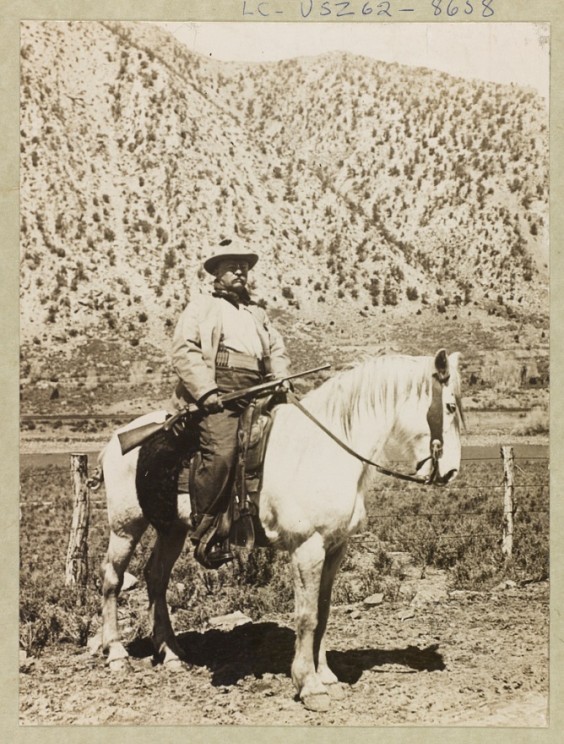

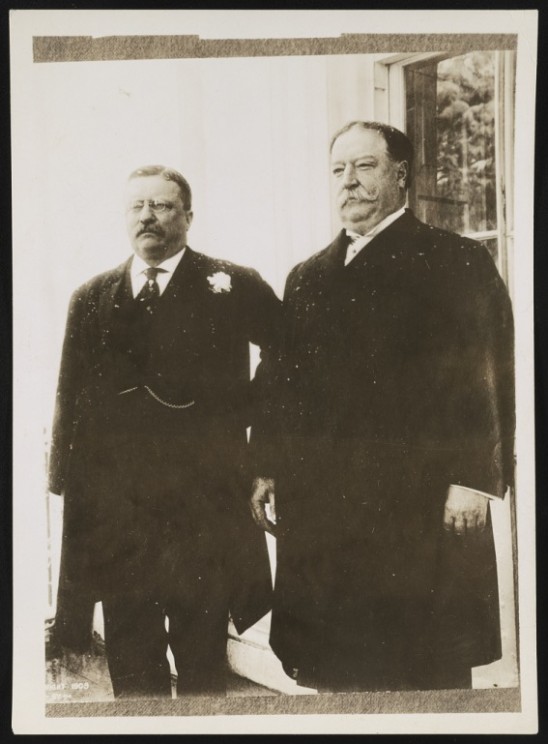



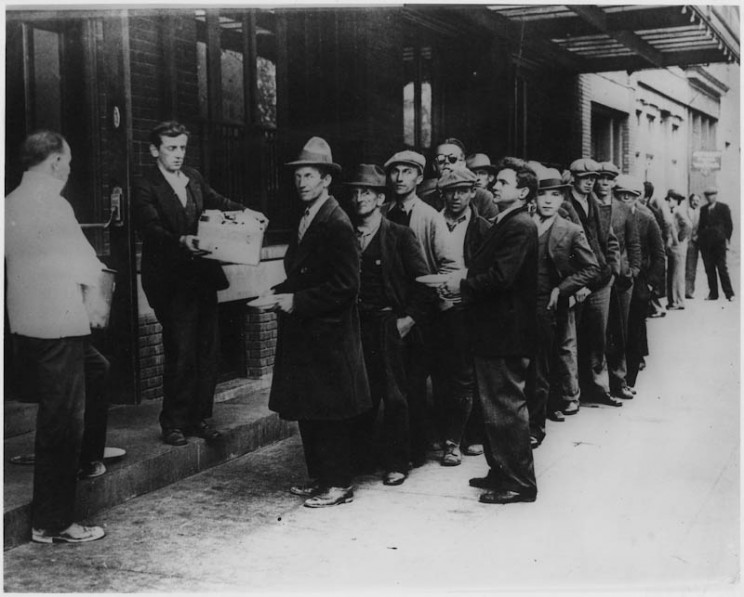
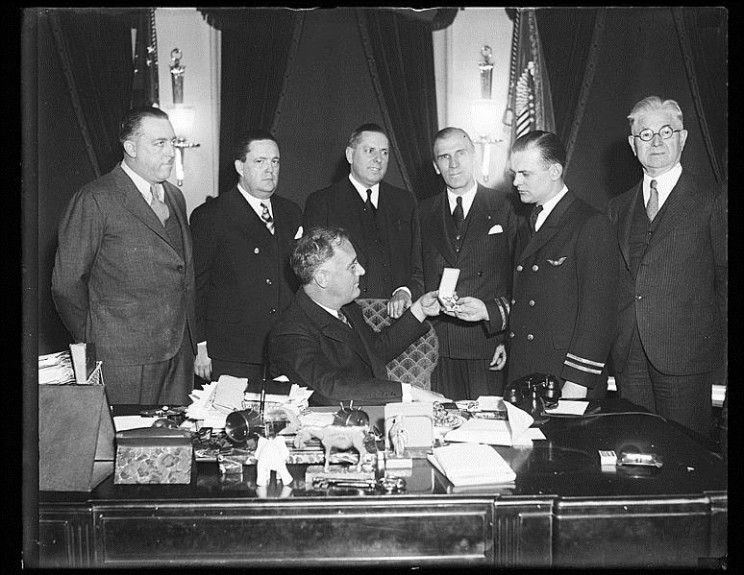
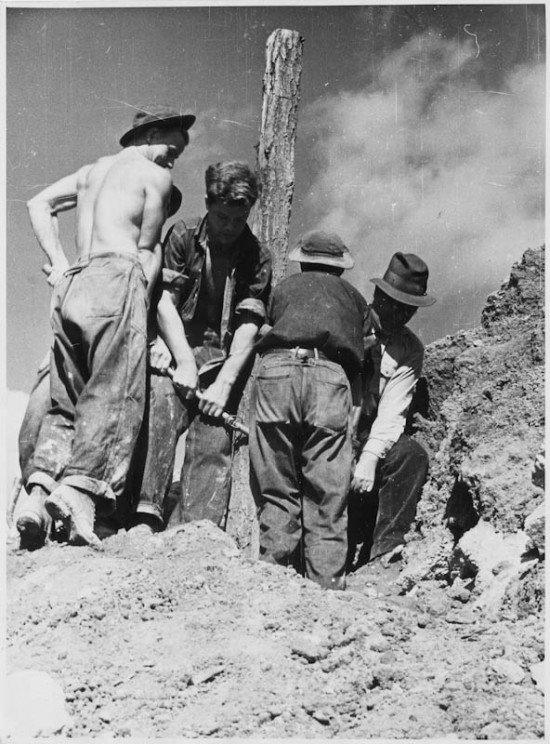
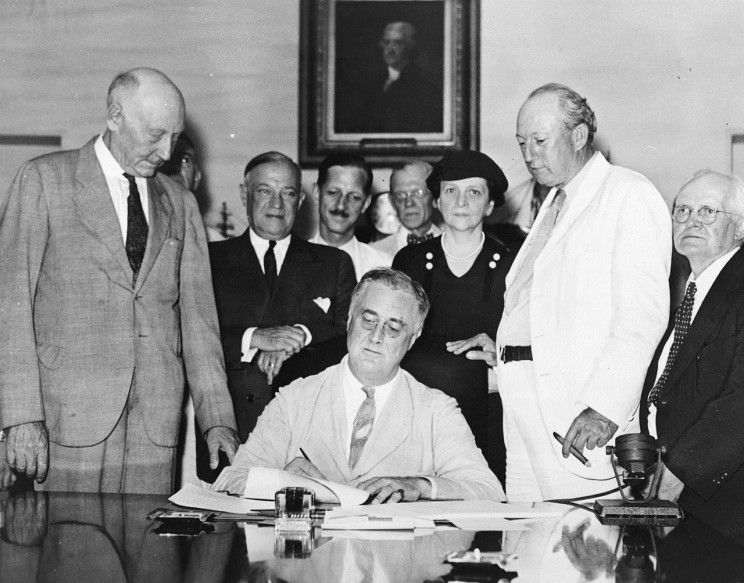


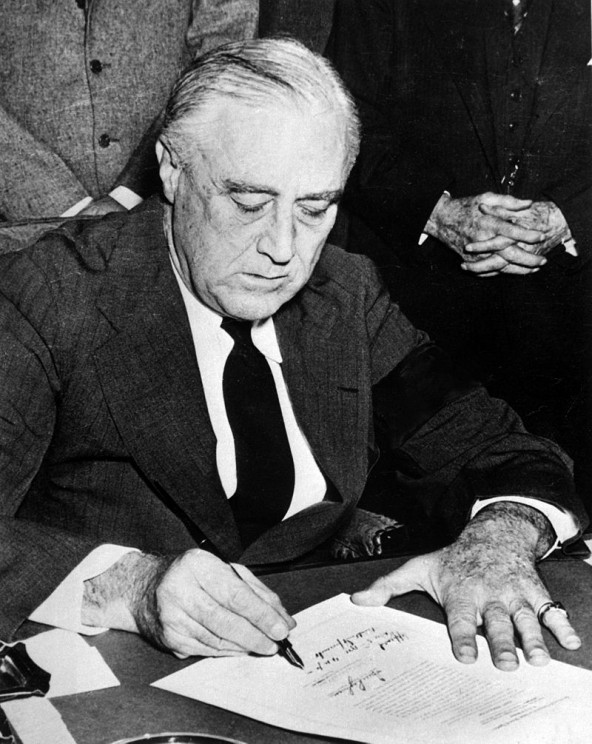
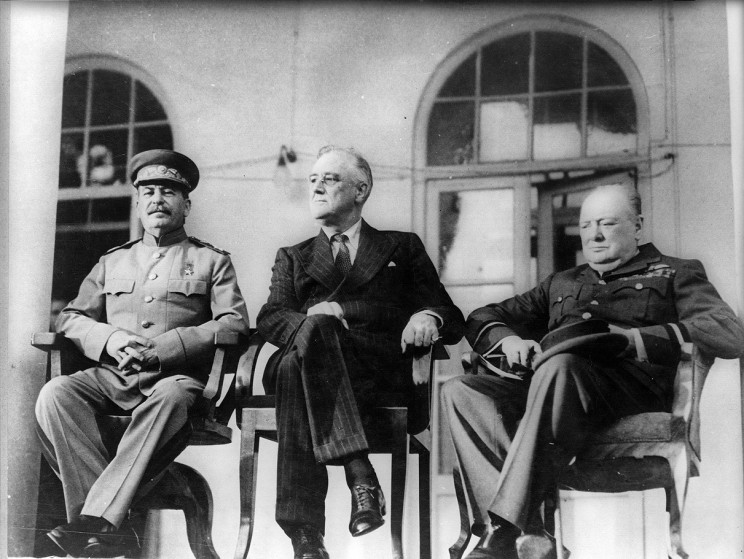
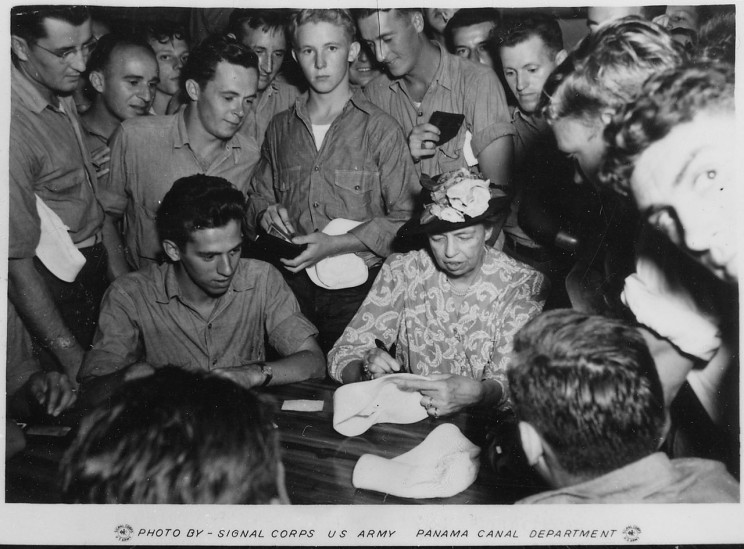
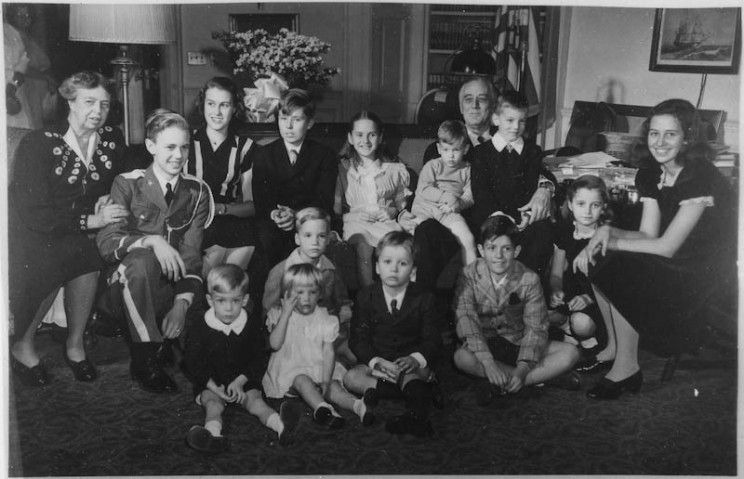

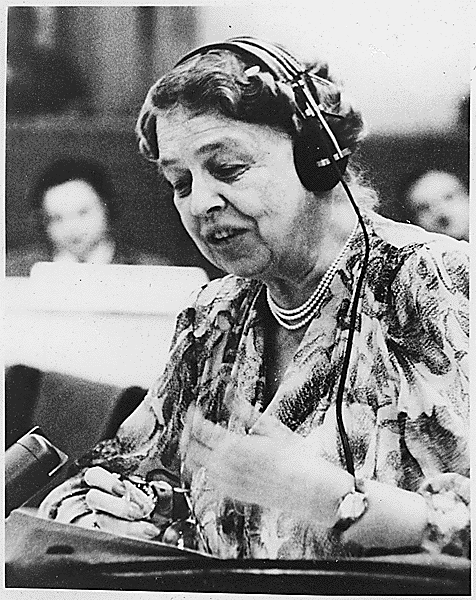

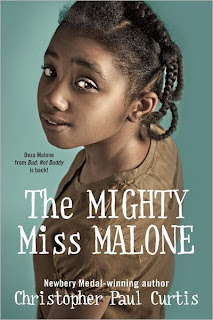
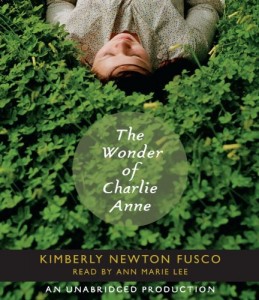



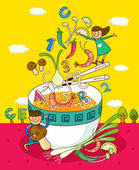
Thea & Ana from theBookSmugglers raved over this book as well. I love Christopher Paul Curtis so I'm sure it's absolutely fantastic. And I love when a book is so utterly quotable and Deza's last quote is especially right-on :D
You've read The Watsons Go to Birmingham right? If not that should be the very.next.book.you read
While reading your review, the name of the author kept bugging me because I KNEW I had heard of him somewhere. Turns out he wrote a couple of books that I read (and enjoyed) as a kid, including The Watsons Go to Birmingham and Bud, Not Buddy.
I just finished The Mighty Miss Malone on Saturday. Wow! I love Deza Malone. I've been having such a difficult time posting on my blog about this book for the exact reason you mentioned - there isn't enough time and space to list all of the wonderfulness that Christopher Paul Curtis smooshed into this gem. And now that I've read your post, I'm at even more of a loss. Your post nails it. Maybe I won't post about TMMM. Maybe I'll just send them over here...
Also, I wanted to give you big virtual blogger hug for commenting on my son's essay over at http://literarylunchbox.blogspot.com/ He is so excited to read all the comments and write down the book suggestions. Thank you!
Yes! And Deza Malone was actually a character in Bud, Not Buddy!
Oh, I hope you get to read it!!! I read The Watsons Go to Birmingham my first year of teaching with a small group. I remember my students really liked it, but I can hardly remember it now! Maybe a re-read is in order?
You are so sweet! And I loved your son's essay :) Frindle is an awesome book.
Ooo, you've made me so excited to read this!